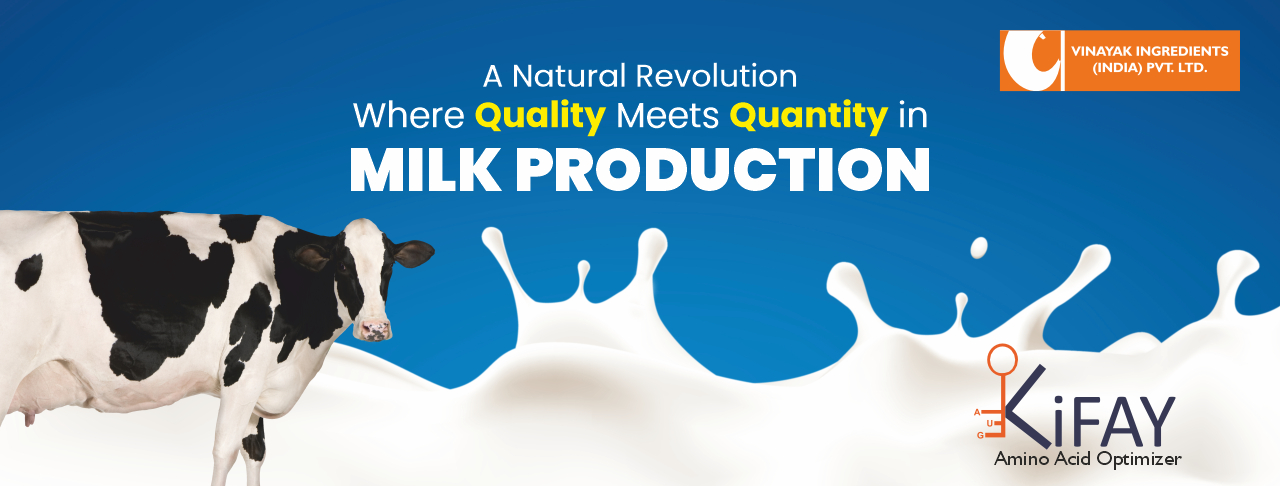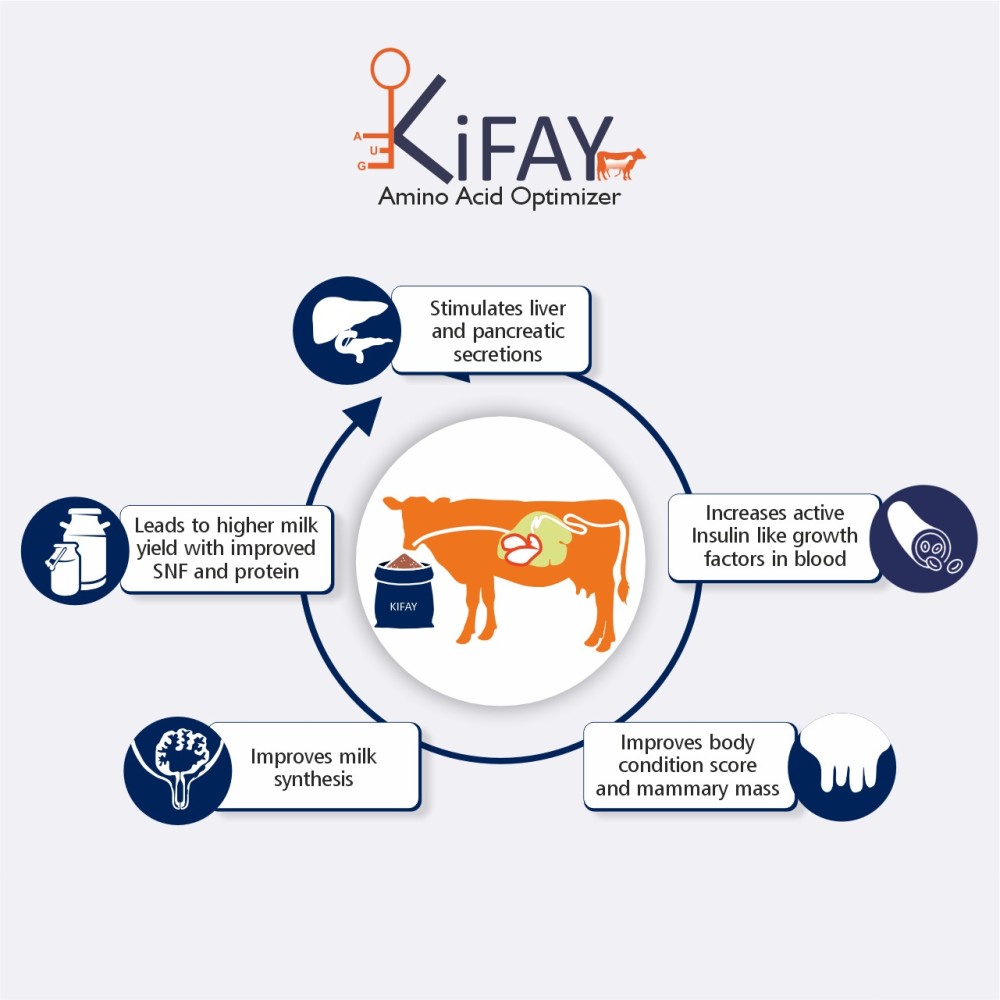
A Natural Revolution – Where Quality Meets Quantity in Milk Production
Production of milk is carried out by about 150 million families worldwide. Smallholders produce most of the milk in developing nations, and Milk Production supports nutrition, food security, and household livelihoods. For cattle to maintain, grow, stay healthy, reproduce, and lactate, protein is an essential food. Protein provides the ammonia and nitrogen sources that rumen gut bacteria require to survive. These microorganisms break down food into Microbial Cell Protein (MCP) and Volatile Fatty Acids (VFAs), which cause digestion. Insufficient protein intake in calves results in a drop in microbial activity, which in turn lowers the pace of digestion. The stimulation of muscle protein synthesis is reliant on the adequate availability of amino acid (AA) precursors.
The increase in circulating AA concentrations in the blood serves as a signal to initiate synthetic processes. A sufficient increase in blood AA is required to overcome a concentration gradient that normally favors the intracellular space. Muscle protein synthesis and a positive anabolic state are directly related to the rate of appearance of AA in the intracellular space. Thus, only feeding amino acids with an optimal amino acid ratio is not the final frontier. Reduced digestive capacity means that the animal can absorb less nutrients. Even though these impacts are internal, you can see how a lack of protein would affect your cattle’s growth.
A milking cow’s diet deficient in calories can lead to low milk protein, low milk production, poor immunity, and poor fertility. The cow will become more prone to illness and metabolic conditions such as mastitis, ketosis, lameness, and loss of body condition as a result. By adopting sustainable and natural approaches, farmers can improve the quality of their dairy products while promoting the well-being of their herds.
KiFAY – An Herbal Supplement for Improving Protein Absorption.
KiFAY is an amino acid optimizer that improves protein turnover. It is a natural feed additive that maintains the anabolic state of the animal in isoenergic diets.
KiFAY, an amino acid optimizer, enhances protein synthesis by reducing protein catabolism and protecting the amino acids from degradation. KiFAY increases the retention of protein in the body which translates into improved production, live weight gain, and immunity.
Benefits of KiFAY
- Improves milk protein
KiFAY can retain more proteins in the body which eventually results in higher protein levels in Milk
- Improves milk SNF
SNF (solids-not-FAT) portion consists of protein (primarily casein and lactalbumin), carbohydrates (primarily lactose), and minerals (including calcium and phosphorus). An improvement in SNF indicates improved yield in value-added milk products
- Enhances immunity
Proteins, an enhanced amino acid accretion results in disease preparedness, and better titers for vaccines drive immunity.
- Increases palatability of food
KiFAY is also a palatability enhancer, it increases the feed consumption in ruminants and thus increases nutrient intake.
- Improves Dung texture
Improved dung patty formation results from better ruminating behavior, which results in higher digestibility coefficients of feed
- Improves Skin Coat Condition
Improved protein utilization improves the body condition score, especially for the coat/skin of the animal.
Why KiFAY? Because…..
Action and Benefits
“Boosted cattle performance through natural means”
References:
Otten, B. M. J., Sthijns, M. M. J. P. E., & Troost, F. J. (2023). A Combination of Acetate, Propionate, and Butyrate Increases Glucose Uptake in C2C12 Myotubes. Nutrients, 15(4), 946. https://doi.org/10.3390/nu15040946
https://en.wikipedia.org/wiki/Insulin-like_growth_factor_1
https://www.organicvalley.coop/blog/from-grass-to-glass-how-do-cows-make-milk/
http://www.holsteinfoundation.org/pdf_doc/workbooks/Milking_Lactation_Workbook.pdf
https://animal.ifas.ufl.edu/apps/dairymedia/rns/2012/8DonkinRNS2012.pdf





